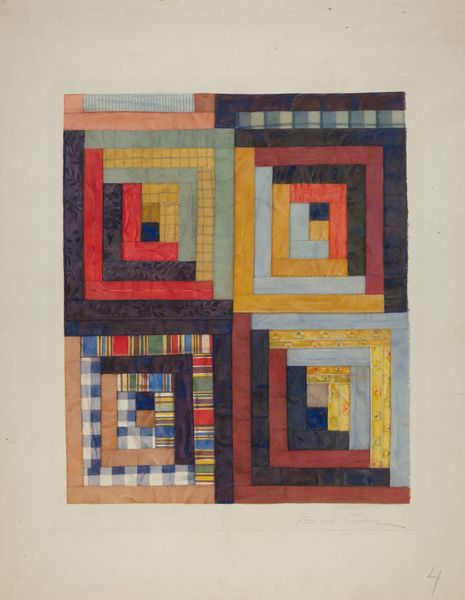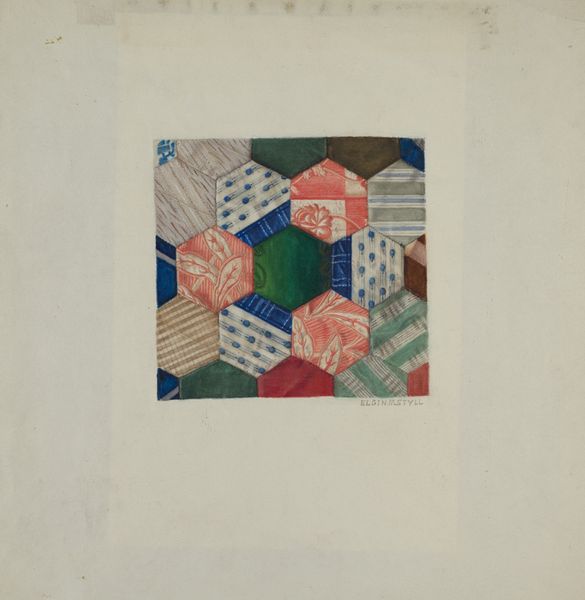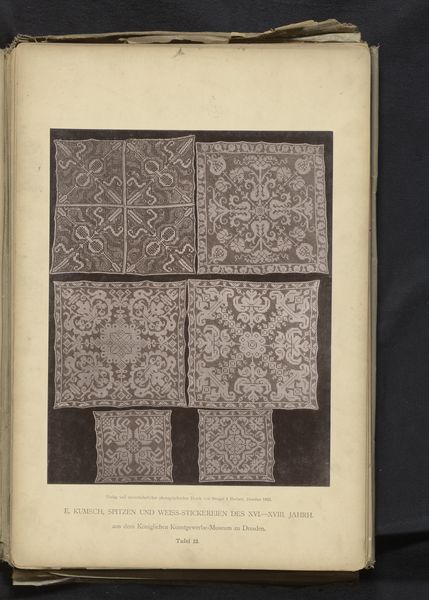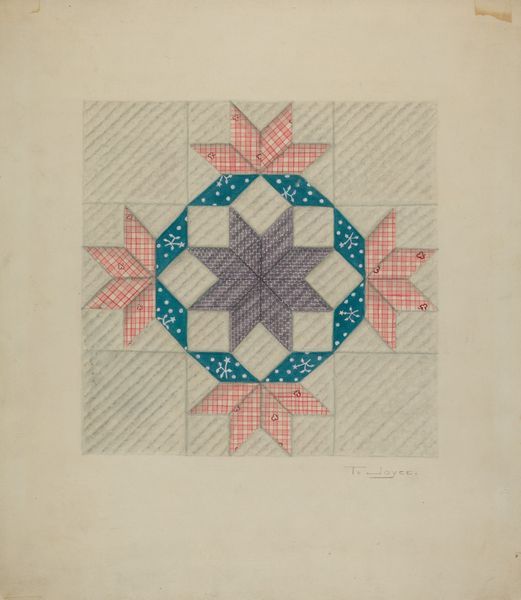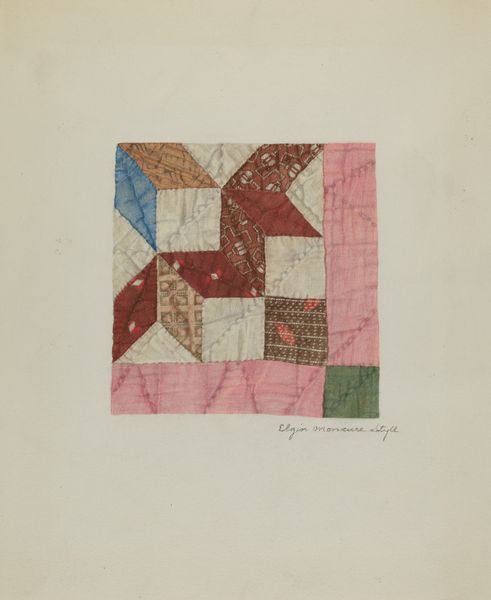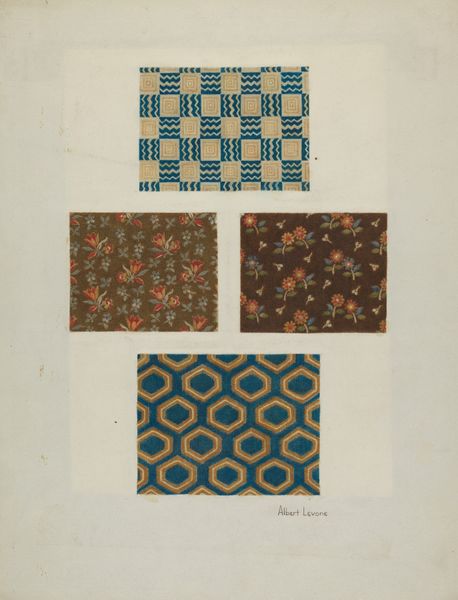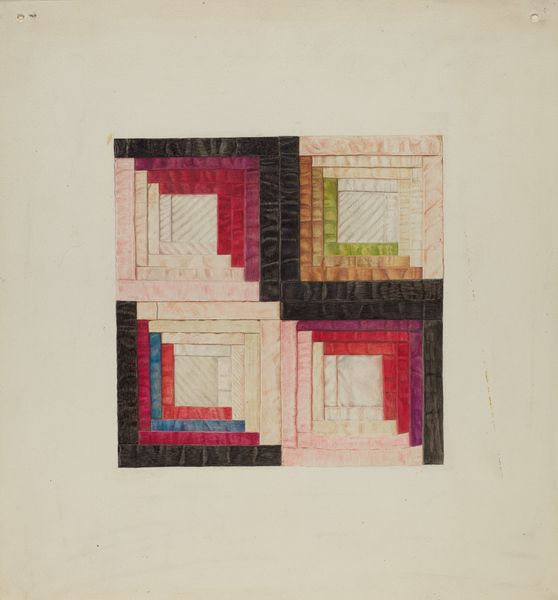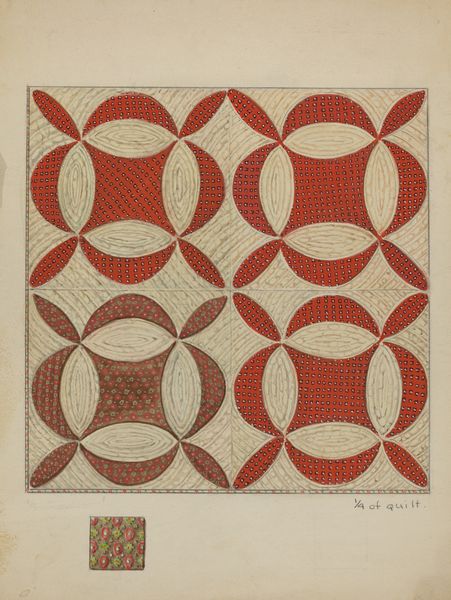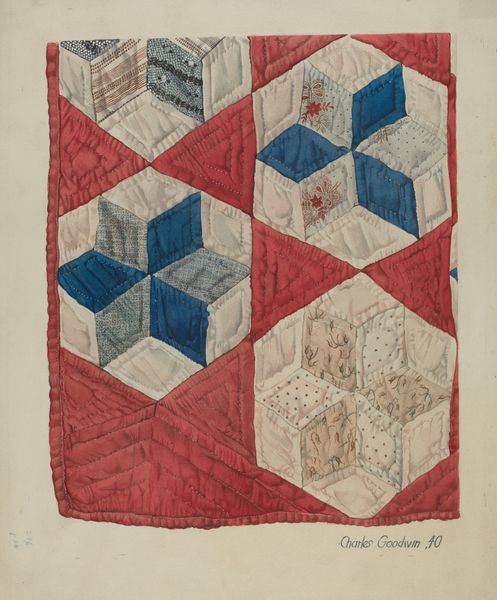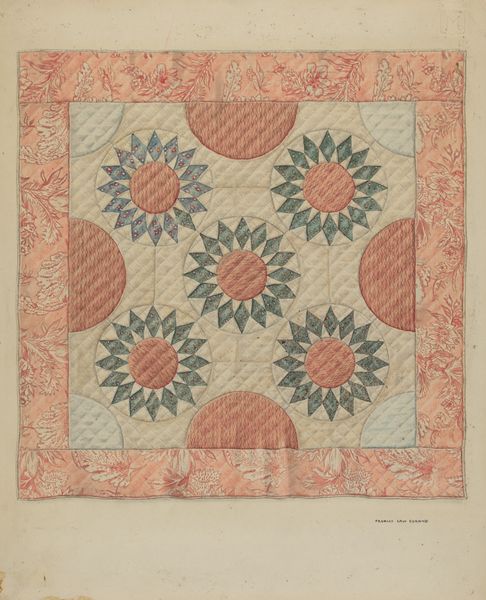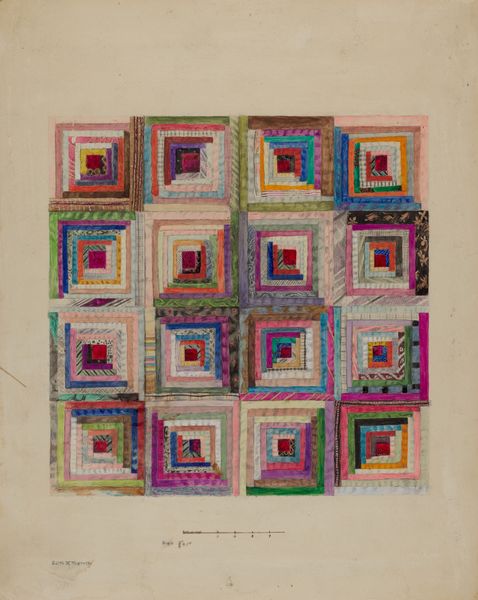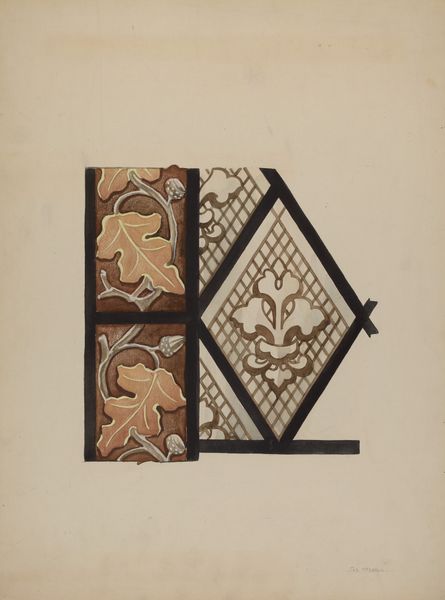
painting, watercolor
#
folk-art
#
water colours
#
painting
#
watercolor
#
folk-art
#
geometric
#
decorative-art
#
mixed medium
#
mixed media
#
watercolor
Dimensions: overall: 23.4 x 19.5 cm (9 3/16 x 7 11/16 in.)
Copyright: National Gallery of Art: CC0 1.0
Curator: Let’s turn our attention to this charming mixed-media piece by Mrs. Goodwin, created around 1937, titled "Quilt (detail) - \"Honeycomb Pattern\"". Editor: My first impression is the striking intimacy of this study. It’s just a small section of a quilt, but it feels grand in its concentrated detail and saturated colors. Curator: Indeed, and the meticulous nature suggests an intimate knowledge and understanding of the quilt-making process. Quilting at this time, especially during the Depression era, was often a vital creative outlet and even a necessity for many women. It provided warmth, both literal and figurative, and it served as a tangible expression of community. Editor: I agree completely. This isn't just decorative art; it’s a representation of lived experience. The “Honeycomb Pattern” itself can be read as a symbol of collectivity – each hexagon a contribution to the larger whole, much like the social fabric of communities where women’s labor was crucial for survival and cultural production. The materials—scraps pieced together—speak volumes about resourcefulness during hardship. Curator: Absolutely. Think about the act of sourcing the materials. Perhaps remnants from other projects, or recycled textiles, each carrying their own histories of use. This “Honeycomb Pattern”, executed in mixed media that emulates the fabric texture so perfectly, elevates domestic craft, and makes it a work of art worthy of examination, highlighting women’s labor usually undervalued. Editor: Also consider the black hexagon strategically placed almost in the center. Does it symbolize anything specific? Is it intentional? In the world of textile, there aren't any mistakes so it surely contributes a crucial component in a piece that can serve as an expressive form of individual agency and the creative process during a period that was rife with hardship for many Americans. Curator: An interesting perspective. Ultimately, pieces like this highlight the critical contributions that women made—both in the home and beyond—and prompt critical reflection. Editor: Exactly. So much is packed into one image; it moves us far beyond simply the appreciation of “art”, it propels us into understanding history and societal framework. Curator: Well, this detailed microcosm shows us how much significance can be found by delving into everyday objects. Editor: It reminds me to reflect on what our textiles, today, reveal about our modern processes of making.
Comments
No comments
Be the first to comment and join the conversation on the ultimate creative platform.
